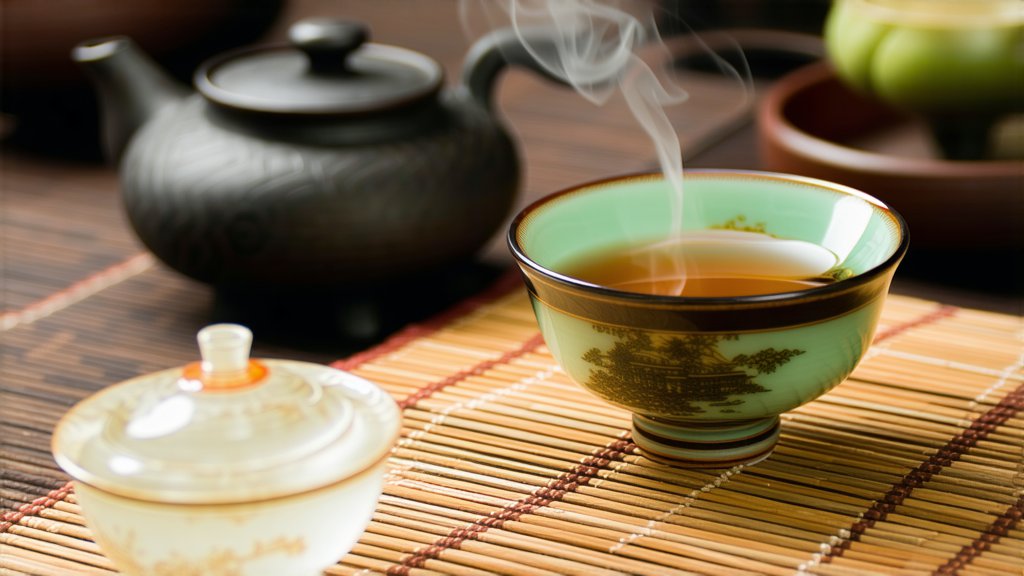
Pu'er tea, hailing from the lush mountains of Yunnan Province in southern China, stands as a testament to the country's rich tea heritage and intricate tea-making traditions. As a unique member of the dark tea family, it has garnered international acclaim for its distinctive aging process, complex flavors, and reputed health benefits. This exploration delves into the historical roots, diverse varieties, meticulous production methods, and nuanced appreciation of Pu'er tea, offering a comprehensive guide for enthusiasts and connoisseurs alike.
Historical Context
The history of Pu'er tea dates back over a millennium, with its origins intertwined with the ancient Tea Horse Road, a trade route that connected Yunnan with Tibet and beyond. Initially produced as a fermented tea to facilitate long-distance transportation, Pu'er evolved into a sought-after beverage among Chinese emperors and common folk alike. Its reputation as a medicinal elixir further solidified its place in Chinese culture, leading to the establishment of specialized tea factories and the development of refined production techniques.
Varieties of Pu'er Tea
Pu'er tea is broadly categorized into two types: Raw (Sheng) and Ripe (Shou). Raw Pu'er undergoes natural fermentation over time, gradually maturing and developing its unique character. It is prized for its potential to transform, offering a spectrum of flavors from fresh and grassy in youth to deep, earthy, and mellow with age. On the other hand, Ripe Pu'er undergoes a controlled fermentation process known as 'wo dui,' which accelerates the aging process, resulting in a tea that can be enjoyed sooner but still possesses depth and complexity.
The Art of Pu'er Production
The journey of Pu'er tea begins with the careful selection of sun-dried Camellia sinensis var. assamica leaves, also known as 'big leaf' or 'ancient tree' tea. These leaves are then either plucked by hand or machine-harvested, depending on the desired quality and tradition. For Raw Pu'er, the leaves are simply dried and sorted before being pressed into cakes, bricks, or other shapes without further processing. This allows the tea to naturally oxidize and ferment over the years.
Ripe Pu'er production, however, involves a more intricate procedure. The leaves are first pile-fermented in a humid environment, encouraging microbial activity that mimics the natural aging process. This process, known as 'wet piling,' can take several weeks to months and requires skilled craftsmanship to ensure optimal fermentation and flavor development. Once completed, the tea is dried, sorted, and often pressed into various forms for aging and distribution.
Appreciating Pu'er Tea: A Sensory Experience
To truly appreciate Pu'er tea, one must engage all senses in the tasting ritual. Begin by inspecting the dry leaves for their color, shape, and aroma. As you break apart a piece of the tea cake or brick, note any variations in texture and scent. Next, rinse the leaves briefly with hot water to 'wake' them up and discard this initial infusion.
For subsequent steepings, use water just below boiling point (around 95°C/203°F) and steep for 15-30 seconds for the first few infusions, gradually increasing the time as the tea opens up. Observe the liquor's color, which ranges from light amber for young Sheng to deep red-brown for aged Shou. Inhale the evolving aromas, which might include notes of earth, wood, mushrooms, dried fruit, or spices.
Sip slowly, allowing the tea to coat your palate, and pay attention to its mouthfeel—whether it's smooth, astringent, or velvety. Savor the complex flavors that unfold with each sip, ranging from sweet and fruity to bitter, pungent, or mellow, depending on the tea's age and storage conditions. Finally, reflect on the aftertaste, which should linger pleasantly, revealing hints of its aging potential or current maturity.
In conclusion, Pu'er tea is not merely a beverage; it is a living testament to China's tea legacy, embodying centuries of tradition, artistry, and cultural significance. Its exploration offers a gateway into understanding the depth and diversity of Chinese tea culture while inviting tea lovers worldwide to embark on a sensory adventure that transcends time and borders.